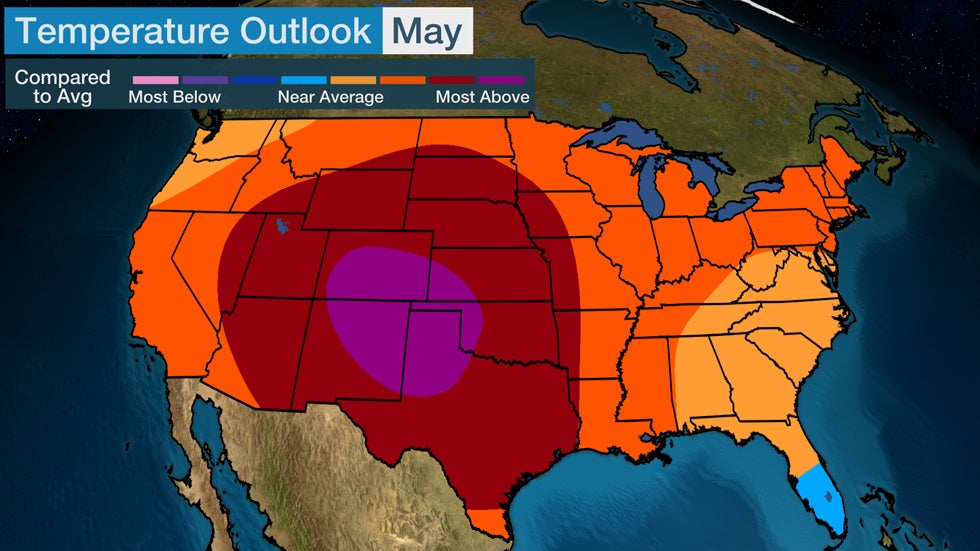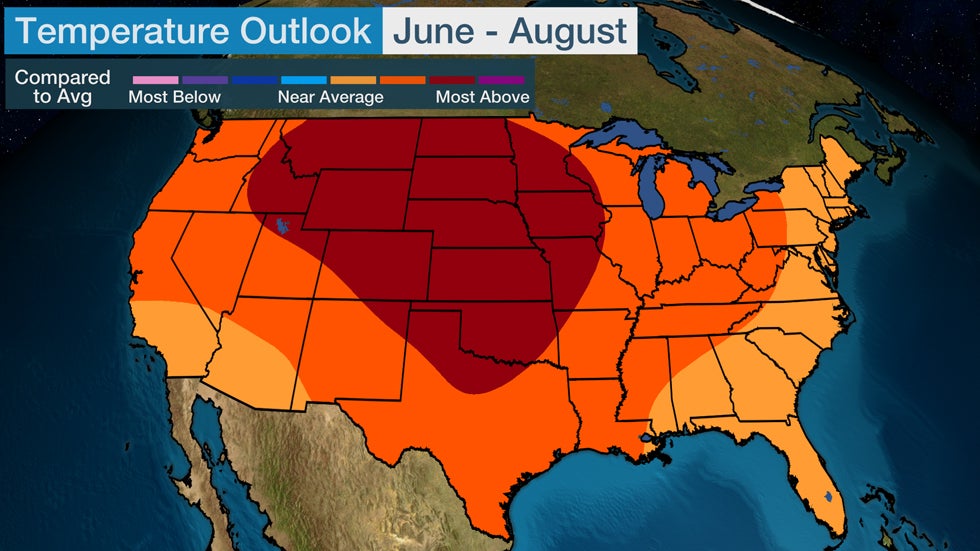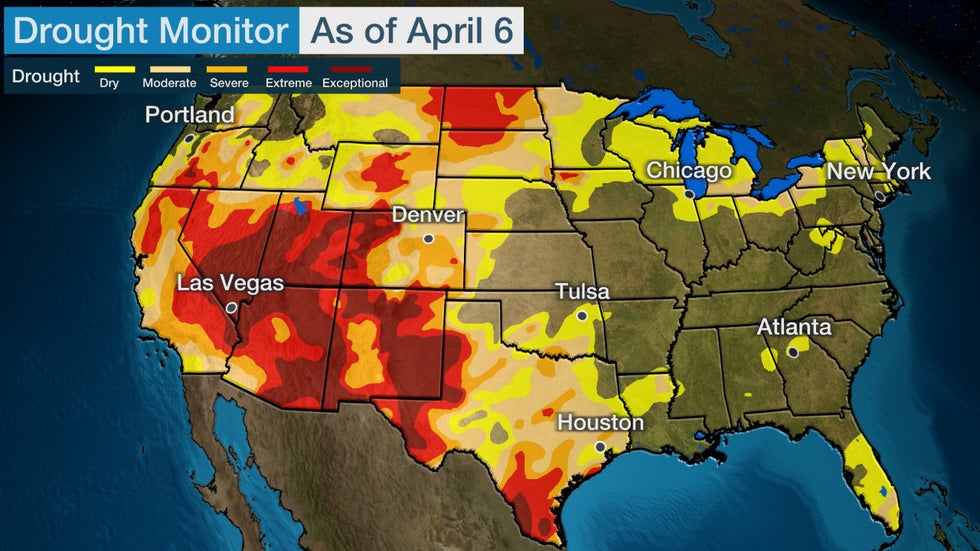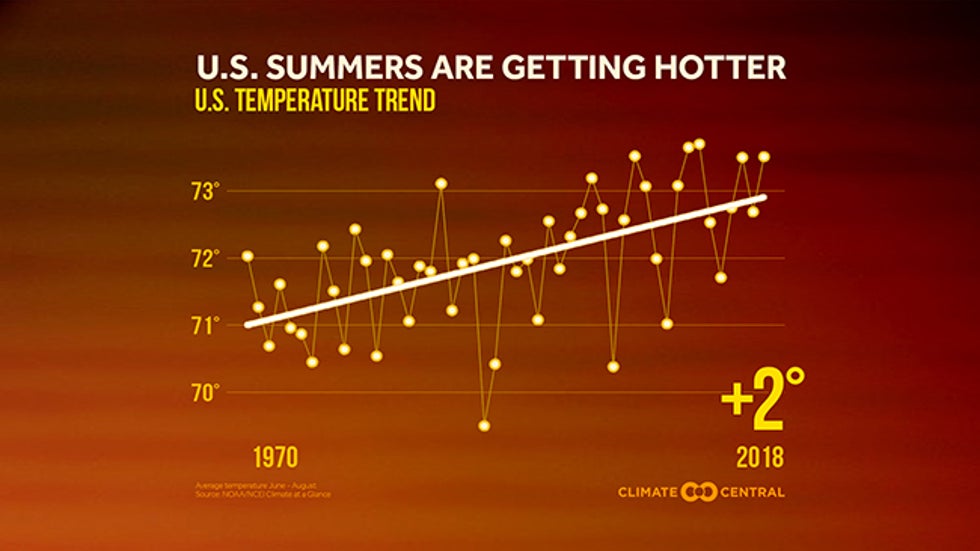weather.com meteorologists
Published: April 15, 2021
Hotter than average temperatures are forecast to grip a vast expanse of the United States for the end of spring and all of summer, especially in western and central parts of the country, according to the latest outlook from The Weather Company, an IBM Business.
May Outlook
Temperatures for the final full month of spring should be farthest above average from parts of the central and southern Rockies into the adjacent Plains states. This will be a complete reversal from the cooler than average temperatures gripping parts of these regions as of mid-April.
Portions of the Great Lakes and Northeast are also forecast to have above-average temperatures in May. There is a chance the Northeast could be somewhat cooler than currently forecast if blocking high pressure redevelops in the northern Atlantic Ocean, but that part of the forecast is uncertain.
The Southeast and Pacific Northwest should have temperatures that are fairly close to average for the month.

Summer Outlook: June-August
Overall, the forecast for summer has trended somewhat hotter for many areas of the U.S. when compared to the initial outlook released a month ago.
A hotter than average June through August is expected from the West Coast to the Plains, Midwest and Great Lakes. Areas from the northern and central Rockies eastward to the upper Mississippi Valley could have the hottest conditions relative to average, as depicted in the darkest red shading below.
Shop This Outdoor Patio Set On Sale Now (SPONSORED)
Much of the East Coast is expected to be near average or slightly warmer this summer. That means typical summertime heat and humidity are expected for these areas, especially in the Southeast.

Hot Summer Forecast Factors
One reason for this generally hot forecast is La Niña, the periodic cooling of water in the eastern equatorial Pacific Ocean that influences weather patterns near the U.S. and elsewhere.
After reaching a typical peak in late fall, the La Niña continues to weaken. And past summers in similar situations have been quite warm.
"Summers after first-year La Niña winters are typically unusually warm in the western U.S. and parts of the northern tier, with any below-normal temperatures typically confined to parts of the southeast U.S.," said Todd Crawford, chief meteorologist with The Weather Company.
Four of the 15 summer-after-La-Niña analogs Crawford examined were among the 10 hottest summers on record in the U.S., including 2011 (third), 2006 (sixth) and 2018 (tied for seventh). Summer 2020 was the nation's fourth-hottest summer dating to 1895.
Another significant factor in summer long-range forecasting is how moist or dry the soil is.
As of early April, over 47 percent of the contiguous U.S. was classified as in drought, according to the Drought Monitor analysis.

Long-range forecasts from NOAA's Climate Prediction Center called for the current drought to persist in parts of the West and Plains over the next three months.
Dry soil warms faster and thus heats the air above it more efficiently than moist soil, leading to hotter temperatures. Soil and vegetation in drought-ridden areas also provide less moisture to the air from evaporation and transpiration.
Get Your Outdoor Space Ready for Summer at Wayfair (SPONSORED)
This all can lead to a spring drought feeding on itself and worsening into the summer.
We have to look at the other side of the globe for one final factor cited by Crawford in this hot summer forecast.
Long-term forecast guidance points to a continuation of an active thunderstorm pattern over the region of the Pacific Ocean near Indonesia. The influence of that activity on the large-scale atmosphere has historically been correlated with hot summers in the U.S.
Summers Are Trending Hotter
A final component to this forecast is climate change.
A study by Climate Central found the nation's summer temperatures warmed by about 2 degrees from 1970 through 2018.
 Summer temperatures in the U.S. since 1970 have trended higher by about 2 degrees since 1970.
Summer temperatures in the U.S. since 1970 have trended higher by about 2 degrees since 1970."Cooling demand has increased about 20% in the past 60 years," said Crawford, referring to the metric of electricity demand for cooling known as population-weighted cooling degree days.
The combination of a fading La Niña, the drought, warm climate model forecasts and the long-term trend all argue for a hot summer ahead.
The Weather Company’s primary journalistic mission is to report on breaking weather news, the environment and the importance of science to our lives. This story does not necessarily represent the position of our parent company, IBM.
The Weather Company’s primary journalistic mission is to report on breaking weather news, the environment and the importance of science to our lives. This story does not necessarily represent the position of our parent company, IBM.

No comments:
Post a Comment